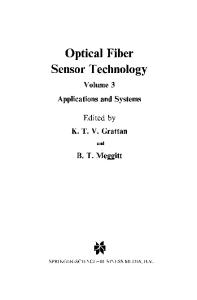Microchannel Arrays in Borophosphosilicate Glass for Photonic Device and Optical Sensor Applications
- PDF / 245,836 Bytes
- 6 Pages / 612 x 792 pts (letter) Page_size
- 62 Downloads / 358 Views
J16.3.1
Microchannel Arrays in Borophosphosilicate Glass for Photonic Device and Optical Sensor Applications Claire L. Callender, Patrick Dumais, Chantal Blanchetière, Christopher J. Ledderhof and Julian P. Noad Communications Research Centre, PO Box 11490, Station H, Ottawa, Ontario, Canada K2H 8S2 ABSTRACT The fabrication of two-dimensional uniform arrays of microchannels in borophosphosilicate glass (BPSG) layers deposited by plasma-enhanced chemical vapor deposition (PECVD) is presented. The microchannels, with circular cross-sections of 2-3 µm diameter, are formed by depositing specific thicknesses of BPSG over periodic ridge/space templates etched into underlying silica layers using reactive ion etching (RIE). High temperature annealing results in reflow of the BPSG and the formation of uniform circular or cylindrical voids between the template ridges. Control of microchannel size and geometry through process variables is reported, and exploitation of the microfluidic and optical properties of microchannels and integrated waveguides for applications in optical sensing and photonic devices is demonstrated INTRODUCTION The development of new technologies to fabricate regularly spaced arrays of microchannels with cross-sections of 100 µm to less than 1 µm has been driven intensively by applications in biotechnology, microelectronics and photonics [1]. There are many methods for fabricating microchannels; many require etching and subsequent sealing of the top surface to form an enclosed channel. In this work, a novel method to fabricate embedded microchannels with crosssectional diameters of 2 to 3 µm in doped silica glass is presented. The integration of these microchannels with optical waveguides offers the potential for the realization of highly parallel on-chip bioassays, novel photonic devices and optical sensors. Borophosphosilicate glass (BPSG) has been widely used in dielectric spacer and planarizing layers in microelectronics [2], and more recently as cladding layers in silica-based planar lightwave circuits [3]. It is well known that BPSG has a tendency to form voids when deposited over closely spaced features, and many studies have been focussed on elimination of voids through careful control of glass composition and process variables. These parameters can also be adjusted to facilitate formation of microchannel voids in BPSG in a controlled fashion. In this work, control of the size, spacing and shape of the microchannels is achieved through adjustment of template geometry, glass composition and annealing conditions [4]. By using the same BPSG material for the template and the void forming layers, silica-air microstructures in a single matrix material can be formed. Alternatively, by patterning the templates in Ge-doped silica layers, optical waveguides aligned in close proximity to microfluidic channels are formed. The evanescent field of the light guided in the waveguides can then be used to access the optical properties of any fluids contained in the channels. This optical interaction between the c
Data Loading...










